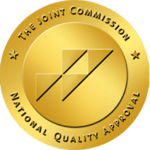Ever heard of xylazine? Chances are, you or someone you know may have encountered this dangerous drug without even realizing it. According to recent reports, xylazine overdoses and addictions are skyrocketing, especially when mixed with opioids like fentanyl. If you observe unusual injuries, impaired speech, or excessive drowsiness in someone you care about, they may be grappling with dependence on this powerful sedative. Please be aware that Xylazine is not approved for human use. It’s essential to adhere to approved medical guidelines and consult with your own medical professional for any concerns regarding medication usage.
What is Xylazine?
Xylazine, originally intended for sedation, anesthesia, and pain management in animals, has morphed into an increasingly abused substance, particularly in California. Referred to on the streets as “xylazine,” “tranq,” and “xylazine HCL,” it’s now being illicitly obtained from veterinary clinics for recreational use in humans. The incidence of xylazine misuse and overdoses has seen a significant rise in California and globally in recent years.
According to the Centers for Disease Control and Prevention (CDC), there was a big increase in the number of deadly opioid overdoses involving xylazine from January 2019 to June 2022. During this time, the presence of xylazine in fatal opioid overdoses went up by 276%, jumping from 2.9% to 10.9%. Xylazine is often found mixed with illegally made fentanyl, making overdose deaths more common.
If you know someone struggling with xylazine addiction, encourage them to seek help right away. Xylazine may be an emerging threat, but with education and advocacy, we can work to curb abuse and save lives.
What are the Xylazine Side Effects on Humans?
Xylazine is not approved for human use, and its effects on humans can be unpredictable and potentially harmful. When individuals misuse or are exposed to xylazine, they may experience a range of side effects, including:
- Central Nervous System Depression: Xylazine acts as a central nervous system depressant, leading to sedation, drowsiness, and lethargy.
- Respiratory Depression: Xylazine can cause a decrease in respiratory rate, potentially leading to difficulty breathing.
- Hypotension: Xylazine may lower blood pressure, which can result in dizziness and fainting.
- Bradycardia: Xylazine can slow down the heart rate, leading to a condition called bradycardia.
- Nausea and Vomiting: Certain individuals may encounter feelings of nausea and episodes of vomiting.
- Coordination Issues: Xylazine can affect motor coordination and may lead to difficulty moving or unsteady gait.
- Hallucinations: In some cases, xylazine use may be associated with hallucinations or altered perceptions.
- Potential for Overdose: When combined with other substances, particularly opioids like fentanyl, xylazine can increase the risk of overdose, which may be life-threatening.
It’s important to note that the effects of xylazine can vary widely among individuals, and its use outside of veterinary settings is strongly discouraged. Anyone experiencing adverse effects after exposure to xylazine should seek immediate medical attention.
What are Xylazine Wounds?
“Xylazine wounds” typically refer to injuries or skin damage resulting from the misuse or abuse of xylazine, a veterinary sedative. Individuals who inject xylazine for recreational purposes may experience complications such as skin abscesses, ulcers, or infections at the injection site. These issues are colloquially referred to as “xylazine wounds” due to their association with the improper use of this substance.
Caring for Skin Wounds
To care for skin wounds, follow these steps:
- Cleanse: Gently wash the wound with mild soap and water to remove dirt and bacteria.
- Sanitize: Apply an antiseptic solution or hydrogen peroxide to the wound to reduce the risk of infection.
- Protect: Cover the wound with a sterile bandage or dressing to keep it clean and promote healing.
- Monitor skin wounds resulting from xylazine use may be susceptible to bacterial infection. Regularly inspect the wound for signs of infection, such as heightened redness, swelling, or increased discomfort.
- Elevate and Rest: If possible, elevate the injured area to reduce swelling and allow time for rest and healing.
- Avoid Irritants: Minimize exposure to irritants like harsh chemicals or excessive moisture.
- Hydrate and Eat Well: Proper hydration and a nutritious diet support overall healing and skin recovery.
- Seek Medical Attention: If the wound is deep, shows signs of infection, or if you’re uncertain about proper care, consult a healthcare professional.
What are Withdrawal Symptoms?
Xylazine is not widely known for causing physical dependence or withdrawal symptoms in the way some substances, like opioids or benzodiazepines, do. However, if someone has been using xylazine regularly or in high doses, abruptly stopping its use may result in certain symptoms. These potential withdrawal-like effects could include:
- Agitation: Individuals may experience restlessness or heightened nervousness.
- Insomnia: Challenges in initiating or maintaining sleep may be experienced.
- Anxiety: Feelings of unease or apprehension may be present.
- Tremors: Involuntary shaking or trembling of the limbs or body.
- Increased Heart Rate: Some individuals may experience a temporary elevation in heart rate.
If someone is suspected of having issues related to xylazine use, they must seek professional medical assistance. Abruptly stopping the use of any substance, especially one not intended for human use, can pose health risks, and medical supervision is recommended to ensure a safe and supportive withdrawal process.
Harm Reduction Tips to Mitigate Risks of Xylazine Use
To mitigate the potential risks associated with the use of xylazine, harm reduction strategies can be implemented, specifically tailored to address the deep sedation induced by this substance. Here are some measures to reduce the potential harms of xylazine use:
- Learn rescue breathing techniques.
- Keep naloxone readily available for administration in case of overdose.
- In the event of an overdose involving xylazine, administer both naloxone and rescue breathing.
- These harm reduction strategies aim to minimize the potential negative effects associated with xylazine consumption.
How Can One Seek Help for Xylazine Addiction?
Finding treatment for a loved one who is addicted to xylazine can be difficult, but there are options. The first step is to convince your loved one that they need help. Xylazine is highly addictive and the withdrawal symptoms upon stopping use can be severe. Professional medical detox and rehabilitation treatment are usually required to overcome an addiction to this dangerous drug.
Detox for xylazine involves a structured process aimed at safely and systematically removing the substance from the individual’s body. This medically supervised detoxification helps manage withdrawal symptoms and ensures a safer transition toward addiction treatment.
After detox, ongoing therapy and counseling are essential. This may include:
- Individual counseling is needed to address the underlying causes of addiction and provide coping strategies for avoiding relapse.
- Group therapy to receive support from others struggling with similar addictions.
- Family counseling can help repair relationships and teach you how to support your loved one’s recovery.
- Medication: Certain medications may be used to reduce cravings and prevent relapse. More research is needed on medications specifically for xylazine addiction.
- Support groups: 12-step programs like Narcotics Anonymous can provide accountability and help from fellow recovering addicts.
- Outpatient treatment: For less severe cases, outpatient treatment with regular therapy and counseling sessions may be an option. Close monitoring and random drug testing are usually involved.
- Long-term residential rehab: For severe addictions, long-term inpatient treatment at a residential rehab facility may provide the most comprehensive level of care. Stays can last 6–12 months or longer.
Overcoming an addiction to xylazine will be a lifelong effort. Relapse is common, so ongoing aftercare and participation in support groups are important for maintaining sobriety. With professional help and a strong support system, recovery is possible.
Westwind Recovery® Can Help Those Dealing with Opioid Addiction
If you or someone you know is struggling with opioid addiction, Westwind Recovery® is here to help you take the first step toward recovery. Our experienced and compassionate team is dedicated to providing personalized care and support on your journey to a healthier and happier life. Take action now and reach out to us for the assistance you need. Recovery is possible, and we are committed to guiding you through every step of the process.

Dr. Deena is the Chief Clinical Officer of Westwind Recovery®, an award-winning outpatient treatment center in Los Angeles where she oversees the clinical and administrative program and treatment methods. Dr. Deena is a doctor of psychology and licensed clinical social worker since 1993. LCSW #20628. Originally from the East Coast, Dr. Deena has worked running treatment centers, worked as a therapist in psychiatric hospitals as well as school settings and currently has a thriving private practice in the LA area. Dr. Deena has appeared regularly on the Dr. Phil Show as an expert since 2003. She has also been featured on many other TV shows, podcasts and has contributed to written publications as well as podcasts.





